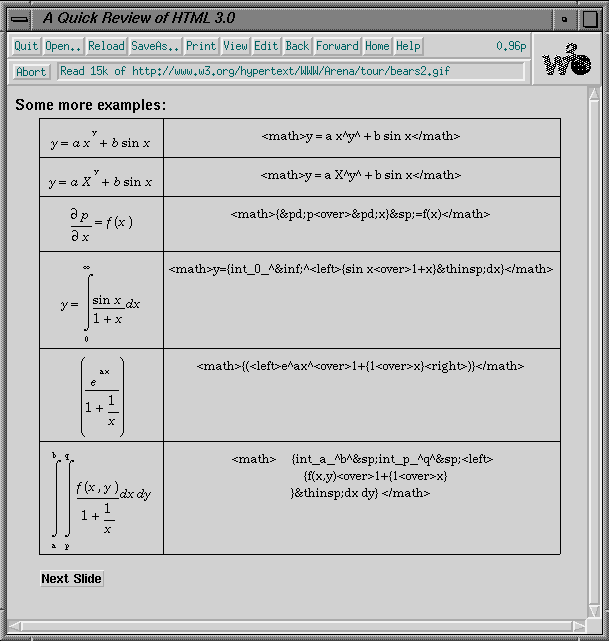
Please address all correspondence to:
Prof Mark J Winter
Department of Chemistry
The University of
Sheffield
Sheffield S3 7HF, UK.
Modification Date: Wednesday, March 29, 1995

The second plate shows how simple lines of symbolic mathematics marked up in HTML 3.0 can be used to produce complex equations.

Because the math markup is semantically precise, the content can easily be translated into other formats, suitable for example for processing using a Mathematica notebook. Another far reaching implication is that documents prepared in HTML format need not be locked into this format, but could easily be translated into other languages as they are developed. By this means, documents prepared in the infancy of the World-Wide Web phenomenon should still be readable in ten or twenty years time by whatever successor systems might have developed by then.